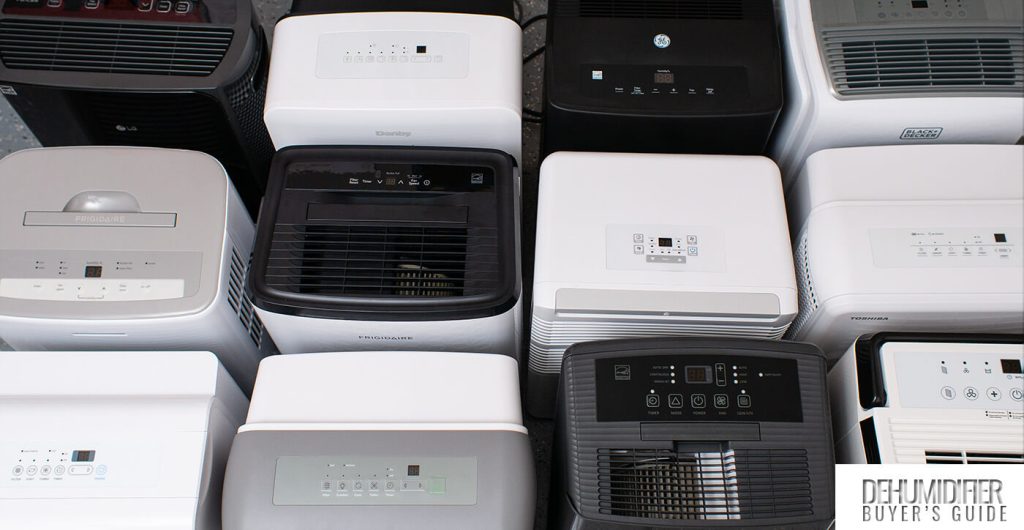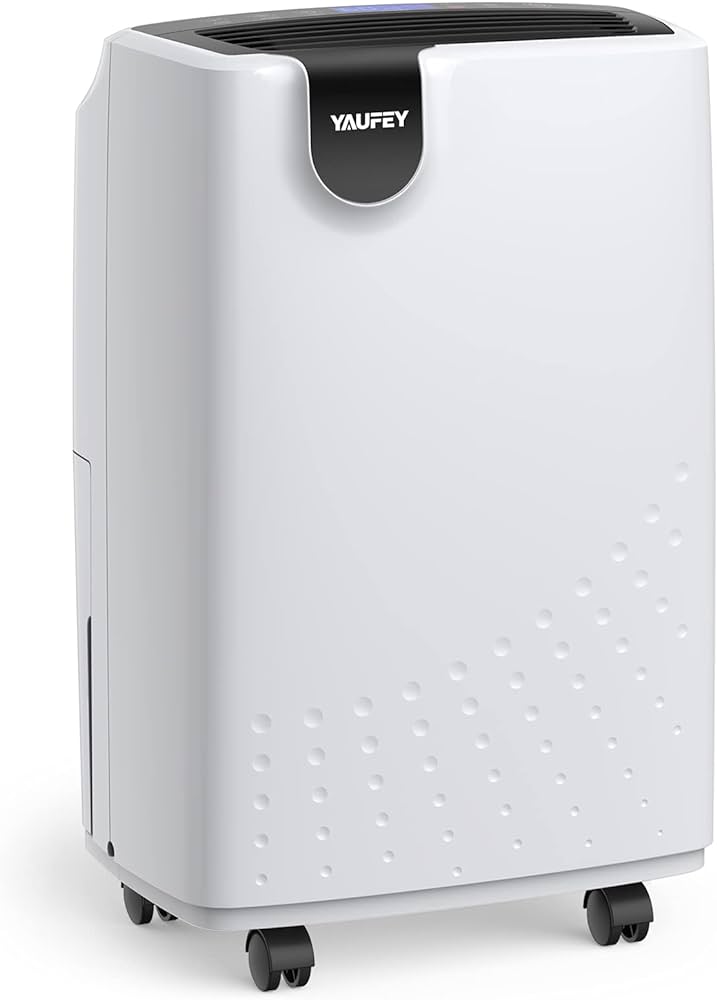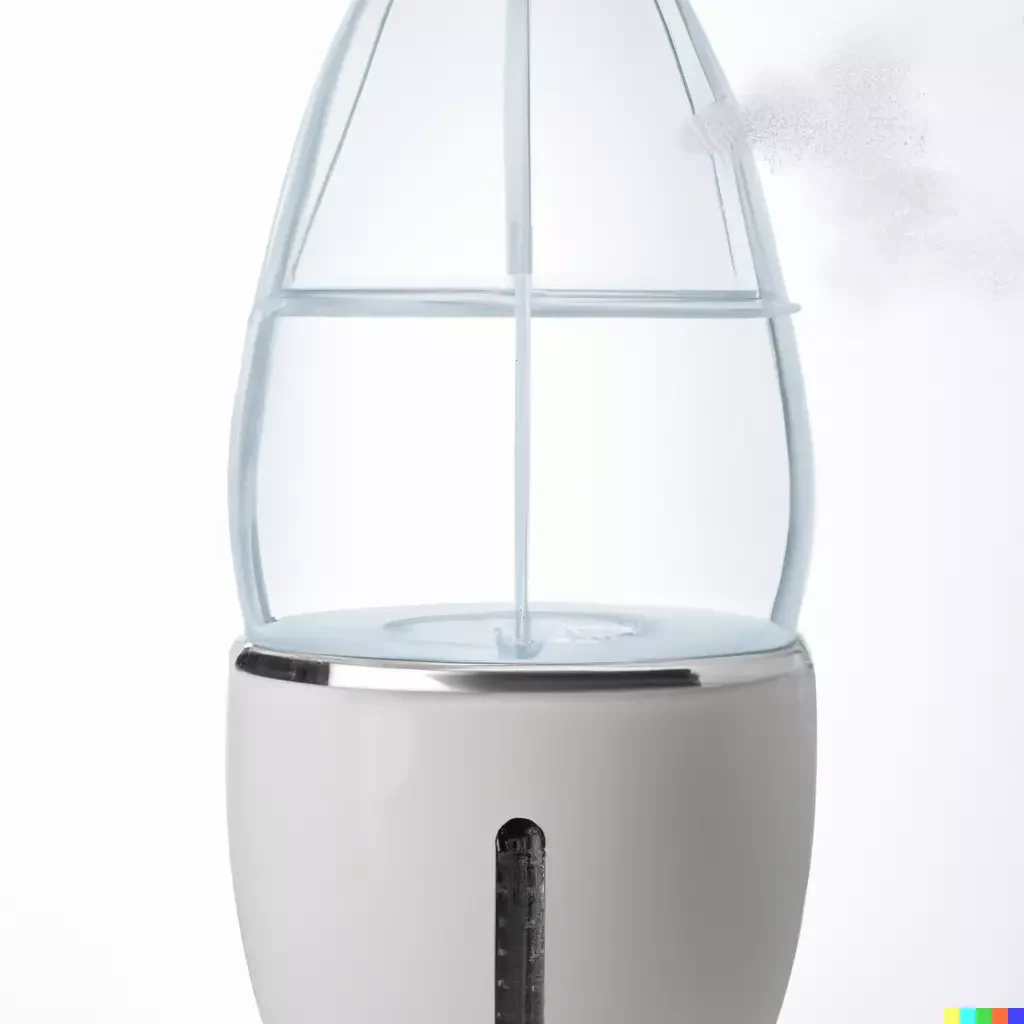A dehumidifier should typically run for about 12 hours a day. This duration can vary based on the specific humidity levels and the size of the area.
Dealing with excess moisture in your home is crucial for maintaining indoor air quality, and a dehumidifier plays a pivotal role in this process. The running time of a dehumidifier can be influenced by factors such as the unit’s capacity, the square footage of the space, and the existing humidity levels.
Striking the right balance is key to ensuring energy efficiency and optimal dehumidification. Keeping your dehumidifier operating for half of the day often strikes this balance, but always consider your unique environment. Remember, a comfortable and healthy home awaits with just the right humidity levels, achievable with proper dehumidifier use.
Dehumidifier Daily Runtime Essentials
When managing the moisture levels in your environment, knowing the optimal daily runtime for your dehumidifier is critical for maintaining comfort, preventing mold growth, and protecting your space from moisture-related damage. Let’s delve into the factors that determine how long you should run your dehumidifier each day to create a healthier and more pleasant living space.
Understanding The Purpose Of A Dehumidifier
Dehumidifiers serve a vital function in both residential and commercial settings. They work diligently to remove excess moisture from the air, which can help to:
- Prevent mold and mildew growth, which thrive in damp conditions.
- Reduce allergens like dust mites and musty odors.
- Protect structural integrity by averting water damage caused by high humidity.
- Enhance comfort levels by balancing indoor humidity.
Factors Influencing Optimal Daily Use
The daily runtime of your dehumidifier is not a one-size-fits-all scenario and is influenced by various factors:
| Factor | Impact on Runtime |
|---|---|
| Humidity Levels | Higher humidity may require longer operation times. |
| Room Size | Larger spaces often need more time to dehumidify. |
| Dehumidifier Capacity | Units with a higher capacity may run for shorter periods. |
| Temperature | Colder environments can affect efficiency and runtime. |
| Airflow | Good ventilation can reduce the need for prolonged use. |
Assessing Your Space’s Unique Needs
Determining the right amount of time to run your dehumidifier each day involves a close assessment of your specific environment:
- Measure the current humidity level with a hygrometer.
- Consider the size and layout of the area being dehumidified.
- Factor in any sources of moisture, such as plants, showers, or cooking activities.
- Pay attention to seasonal changes that may affect indoor humidity.
- Monitor the unit’s water collection to gauge its efficiency over time.
By scrutinizing these elements, you can customize the dehumidifier’s runtime to align with the unique demands of your space, ensuring effective moisture control that adapts to varying conditions.
Determining Your Dehumidifier’s Efficiency
Determining the efficiency of your dehumidifier is crucial in maintaining a comfortable humidity level at home while optimizing energy consumption. Understanding how long a dehumidifier should run per day can be influenced by several factors, which include the unit’s capacity, the size of the room, and environmental conditions. The efficient running of your dehumidifier not only protects the structure of your home and your health but also contributes to energy savings and cost-effective operation.
Calculating Dehumidifier Capacity And Room Size
To ensure your dehumidifier operates efficiently, you must first match its capacity to the size of the room. Capacity is generally measured in pints of moisture removed in 24 hours. Use the following guidelines to assist you:
- Determine your room’s dimensions to calculate its square footage.
- Cross-reference this area with the recommended pint capacity from the dehumidifier’s manufacturer.
- Consider the level of humidity within your space. Heavily damp rooms may require a dehumidifier with a higher capacity.
Using the correct capacity ensures that your dehumidifier isn’t overworking, leading to longer lifespan and better energy usage.
Matching Dehumidifier Features With Environmental Factors
Various environmental factors affect dehumidifier efficiency. This encompasses:
- Room temperature and humidity levels
- Frequency of room usage
- Number of occupants and pets
- Presence of plants and aquariums
Select a dehumidifier with features that can tackle these variables. Look for units with a built-in hygrometer for real-time humidity readings, a programmable timer, and adjustable fan speeds. Match these to your specific environment for optimal performance.
Efficiency And Energy Consumption Considerations
Energy efficiency is a top consideration when running your dehumidifier:
- Seek out models with an Energy Star rating.
- Keep in mind the energy cost in your area to calculate the operating expense.
- Monitor your dehumidifier’s runtime to align with peak humidity periods.
A unit’s energy consumption is directly proportional to its run time. To enhance efficiency, use a dehumidifier with a humidistat that turns the dehumidifier on and off based on the room’s humidity level, similar to a thermostat. By doing so, the dehumidifier operates only when necessary, reducing energy consumption and extending the unit’s life.
Ideal Dehumidifier Operating Times
Understanding the ideal operating times for a dehumidifier can be key to maintaining a comfortable and healthy indoor environment. This often-overlooked aspect of home climate control is essential to eliminating excess moisture and keeping humidity levels in check. Evaluating your home’s specific needs and outside weather conditions can help determine the optimum dehumidifier runtime to maximize comfort while minimizing energy consumption.
Typical Dehumidifier Runtimes In Various Conditions
The length of time a dehumidifier should run daily can vary, depending on several factors such as humidity levels, room size, and the unit’s capacity. Here’s a quick guide to help you gauge the typical runtime you might expect:
- High Humidity Conditions: During wet seasons or in naturally damp areas like basements, dehumidifiers may need to run for 12 to 14 hours a day.
- Moderate Humidity Conditions: For managing typical day-to-day moisture, an average of 8 to 12 hours may suffice.
- Low Humidity Conditions: In drier climates or periods of the year, a 4 to 6-hour daily operation can be adequate.
Signs Of Adequate/inadequate Run Time
Spotting the right balance for your dehumidifier’s run time is crucial. Here are signs to lookout for that indicate whether the current settings are effective or need adjustment:
| Adequate Run Time | Inadequate Run Time |
|---|---|
| – Comfortable humidity levels (typically 30-50%) | – Persistent musty odors or dampness |
| – No condensation on windows and pipes | – Mold or mildew growth |
| – Dryer air resulting in better respiratory comfort | – Allergies or asthma worsen due to excess moisture |
Adjusting Runtimes For Maximum Comfort And Efficiency
To optimize dehumidifier performance, fine-tuning runtimes become necessary. Consider these steps:
- Use a hygrometer to monitor room humidity levels.
- Set your dehumidifier to maintain the recommended humidity level (30-50%).
- Adjust the settings based on seasonal changes or variations in indoor activities that introduce moisture (like showering or cooking).
- For energy efficiency, use a unit with a humidistat, which automatically turns the dehumidifier on and off based on specified humidity levels.
- Consider using a timer to have the dehumidifier run during off-peak electricity hours.
By tailoring the dehumidifier’s runtimes to your home’s unique conditions, you will create a pleasant and healthy living space while being energy-conscious.
Balancing Humidity And Energy Use
Managing the humidity in your home is crucial for comfort and health, but it’s also important to do it efficiently to keep energy costs down. An overly damp environment can encourage the growth of mold and attract pests, while dry air can cause respiratory problems and damage wooden furniture. Using a dehumidifier is an effective way to maintain optimal humidity levels, but it may leave you wondering: how long should a dehumidifier run per day? The answer depends on various factors, including the size of the space, the current humidity level, and the dehumidifier’s capacity. In this section, we’ll discuss the best practices for running your dehumidifier in an energy-efficient manner without compromising on air quality.
Strategies For Optimal Dehumidifier Use
- Monitor Humidity Levels: Use a hygrometer to keep track of the humidity in your space. Aim for a level between 30-50%.
- Size Matters: Ensure your dehumidifier is the right size for the area it is servicing. An undersized unit will run continuously without improving conditions significantly.
- Environmental Conditions: Adjust your dehumidifier usage depending on the season and weather patterns, as they will affect indoor humidity levels.
- Regular Maintenance: Clean the air filters and empty the water bucket regularly to maintain efficiency and effectiveness.
Smart Dehumidifiers And Programmable Settings
Modern dehumidifiers come equipped with smart technology and programmable settings that simplify the process of balancing humidity and energy use. These features enable the unit to adjust its operation based on real-time humidity readings automatically. Some models can even be controlled remotely through a smartphone, allowing you to adjust settings while away from home. Taking advantage of these capabilities can lead to substantial energy savings without sacrificing air quality.
When To Use Continuous Versus Intermittent Operation
The decision to run your dehumidifier continuously or intermittently should be based on specific needs and conditions. Use continuous operation when:
- There’s been water damage, and you need to dry out the space quickly.
- High humidity levels are persistent, like in a basement or during a muggy summer.
- Humidity levels are only occasionally above the desired range.
- You’re looking to maintain a consistent level after achieving an optimal humidity balance.
By understanding the unique requirements of your environment and using the right settings, you can effectively maintain a comfortable home while keeping energy consumption in check.
Maintaining Your Dehumidifier For Performance
A dehumidifier plays a crucial role in maintaining comfortable humidity levels in your home. Like any appliance, it requires regular maintenance to run efficiently. Ignoring care can lead to decreased performance and a shorter lifespan. By following a routine maintenance schedule, you ensure that your dehumidifier runs optimally throughout its usage period.
Cleaning And Upkeep Tips For Longevity
To extend the life of your dehumidifier, a consistent cleaning regimen is essential. Here are some actionable tips:
- Filter Maintenance: Clean or replace the air filter every 250 hours of use, as a clogged filter can impede air flow and efficiency.
- Coils Cleaning: Dust and grime can accumulate on the condenser and evaporator coils. Gently wipe the coils with a soft cloth every season to maintain their performance.
- Water Reservoir: Regularly empty and cleanse the bucket to prevent mold and mildew formation. Using mild detergent or vinegar can eliminate potential odors and bacteria.
- Exterior Surface: Wipe down the outer surfaces with a damp cloth to prevent dust build-up, which could be drawn into the system.
Monitoring Performance And Knowing When To Upgrade
Tracking your dehumidifier’s performance is key to recognizing when it’s time for an upgrade. Symptoms of a struggling dehumidifier include:
| Sign | Meaning |
|---|---|
| Inconsistent Humidity Levels | The unit is no longer regulating the humidity properly. |
| Increased Energy Bills | The appliance may be running more frequently, indicating inefficiency. |
| Unusual Noises or Odors | Could suggest mechanical failure or mold growth within the unit. |
Should these issues persist despite regular maintenance, consider a replacement to maintain air quality and energy efficiency.
Seasonal Adjustments And Storage Advice
Seasonal handling of your dehumidifier can affect its longevity and performance:
- Summer Use: Operate the dehumidifier during damp conditions, especially in high-humidity regions, typically at a lower humidity setting (30-50%).
- Winter Storage: Before storing, thoroughly clean the unit and ensure it’s completely dry to prevent internal damage. Store it upright in a dry, cool place.
- Transitioning Seasons: Monitor humidity levels as the seasons change and adjust the dehumidifier settings accordingly for continued comfort and performance.
Adherence to this practice ensures your device is ready for operation when needed, providing ideal performance year-round.

Credit: www.dehumidifierbuyersguide.com
Frequently Asked Questions For How Long Should A Dehumidifier Run Per Day
What Is The Optimal Daily Runtime For Dehumidifiers?
The optimal runtime varies, but generally, a dehumidifier should run for at least 12 hours a day. This ensures adequate moisture removal for a typical home environment. However, factors like humidity levels, room size, and the unit’s capacity can influence this duration.
Can Dehumidifiers Run Continuously All Day?
Yes, most dehumidifiers can run continuously. However, to save on energy costs and reduce wear, it’s recommended to use a built-in humidistat. This will automatically turn the dehumidifier on or off to maintain desired humidity levels.
How Many Hours Should A Dehumidifier Work In High Humidity?
In high humidity conditions, running a dehumidifier for 24 hours until reaching the target humidity is often necessary. After achieving the desired humidity, the dehumidifier can be set to maintain it, reducing the runtime.
Does Room Size Affect Dehumidifier Run Time?
Room size significantly impacts dehumidifier run time. Larger rooms or areas with higher moisture content will require the dehumidifier to run longer to effectively reduce and maintain desired humidity levels.
Conclusion
Determining the ideal duration to run a dehumidifier hinges on various factors. Tailor run times to your space’s humidity levels and unit capacity. Aim for comfortable air quality, keeping energy efficiency in mind. Regular assessments and adjustments ensure optimal operation.
Balance is key for a healthier, more comfortable home environment.





